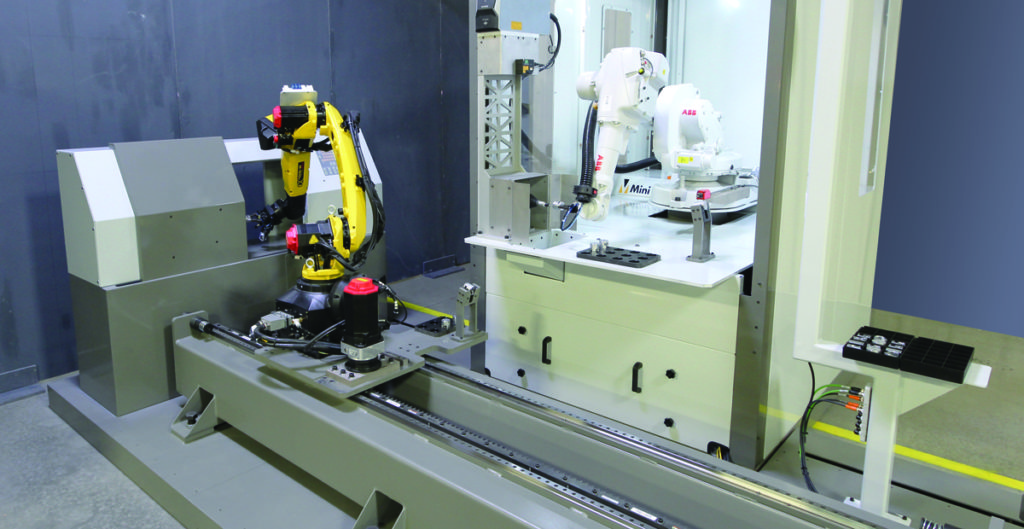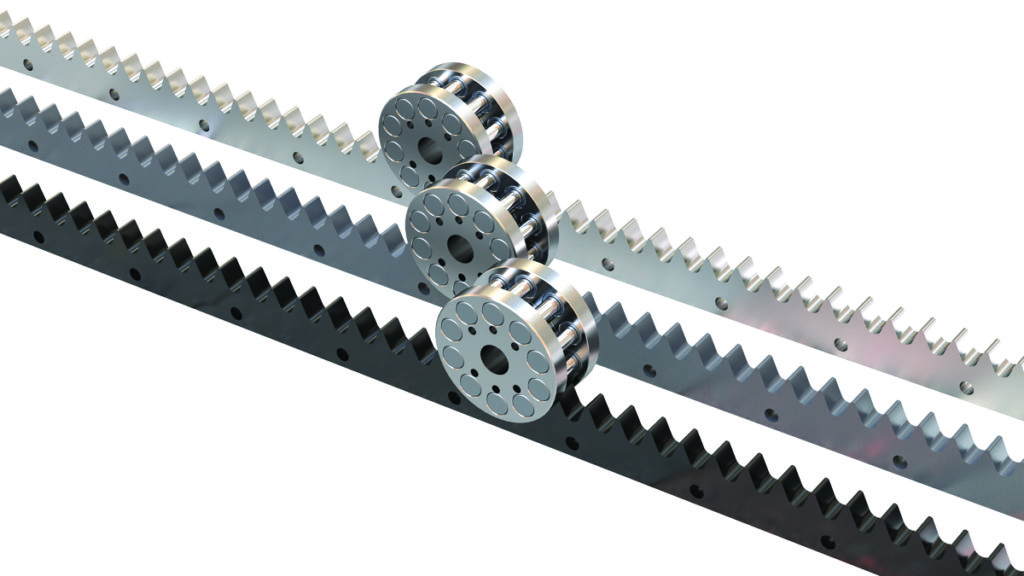Manufacturers in many industries have relied on Mesh Automation Inc.’s machine engineering, design and installation services for nearly 20 years. During that time, the company has completed more than 850 projects of all sizes related to robotic workcells, vision inspection and system integration. Based in Dawsonville, Georgia, USA, Mesh builds custom automation equipment and offers a standard line of pre-engineered modules that make up the backbone of its system. Mesh uses robots and motion controlled linear systems to move raw materials or finished goods throughout their processes. The equipment is frequently used in many dirty environments typical of fabrication processes such as welding, grinding and finishing.

One project involved building an automation system for welding studs to a sheet metal door. Design challenges included producing welds strong enough to withstand high pullout force, preventing backside marking on the door, and maintaining production speed while accurately placing components.
Mesh used six welding guns to ensure strong welds, and non-marking material to eliminate backside marking. For the production speed and placement-accuracy challenges, Mesh engineers decided that a Cartesian robot, rather than a six-axis model, was the best option for this type of system.
Cody Larson, Mesh product manager, says the robot can reach a speed of 1.25 meters per second, while maintaining a position accuracy of ±0,075 mm (±0.003 inch). It covers a large work area of 1.2 x 2.4 m (4 by 8 feet) and is rugged enough for 24/7 operation in a welding environment. Other system features include a mounting plate, linear slides, pneumatic actuators, a light ring and a camera for post-assembly inspection.
A key aspect of system design was finding the best way to move the robot within the work area. Mesh engineers looked at various rack-and-pinion and ballscrew systems before consulting with Mahx F. Linster Inc. (MFL), their local motion control expert. MFL recommended that Mesh use the RPS roller pinion system from Nexen, in conjunction with servomotor gearboxes, to optimize robot motion.
«The RPS made the machine design straight forward» says Cody Larson. «Also, our expectation concerning performance was exceeded while maintaining our budget.»
Shortly after this project, Mesh developed two modular automation cells. MAC cells are equipped with either a Cartesian robot (servo-powered RPS) or a six-axis robot, as well as manual, semiautomatic or automatic part handling. Its skid-mounted design allows for easy installation and repositioning. Other features include built-in LED lights, a process equipment shelf and a pneumatic preparation station.
MiniMAC models feature a small Cartesian robot that operates on a working table and frame of either 0.5 m² or 0.7 m² (2 by 3 feet or 4 feet square). These compact semiautomatic machines are ideal for lower-volume applications where quality, consistency and safety are important.
Both series are designed for mission-critical applications involving processes as varied as assembly, welding, dispensing, routing, machining, cutting and inspection. According to Larson, the RPS and other high-quality components contribute to the cells’ robustness.
Application advantages
Unlike the traditional rack and pinion system, the RPS features a pinion consisting of 10 or 12 needle-bearing supported rollers that engage a rack tooth profile. The sealed and lubricated rollers move smoothly along the profile, resulting in zero backlash and 99 percent efficient conversion of rotary to linear motion. Maximum speed is 11 m/s (36 fps); accuracy is ±0,03 mm (±0.00118 inch). The tooth profile is lubricated with a high-performance light grease at installation and then every six months, or 2 million pinion revolutions.

«Nexen’s application engineering department was very professional, responsive and offered various solutions including custom designs if needed», says Mesh Automation’s President Mitch Larson. «Additionally, we required competitive commercial requirements and long-term availability of components. It was a plus that Nexen manufactures in the USA with a convenient location to an international airport. Nexen’s RPS product eventually won the business due to their product being the best fit and quite superior in all technical aspects, ease of maintenance and superior longevity before deterioration of the positional accuracy and repeatability.»
Mesh was able to offer the robot transfer unit for medium payload robots to their customers at an attractive and competitive price. They chose the size 25 RPS roller pinion system for most of their applications but, due to Nexen’s product line and design, they can easily upsize for those very demanding applications requiring the highest torques. The design is easily customizable for length up to 12 m, is elegantly simple, can accommodate any robot manufacturers’ motor and has a some configurable options such as way covers, auto lubrication, on-board regrip station, weld power supply carriage and a work-in-process tray. Direct link to more product information: https://www.nexengroup.com/nxn/products/prod-nav/lp/Roller+Pinion+System



